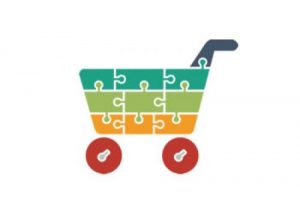
In business, your key partners are the relationships that your business has with other businesses to ensure your business model will be successful.
The most obvious key partnerships are related to your supply chain. When you think about it, most companies are simply a link in a much larger value chain.
We often think of our customers as end-users of our products and services, but in reality, our customers are most often simply the next link in the chain. To our customers, we are their key partners. Without what we sell to them, they could not produce their output.
Let’s consider buying a new car. There are literally thousands of key partnership relationships that made the car happen. If you are the car manufacturer, your key partners are the companies that make the tires, rims, and brakes. Moreover, if you are the tire company, you have key partnerships with rubber suppliers and the steel company that supplies you with the steel cords used to manufacture tires. Each link in the supply chain has key partners that help the company do what it does.
Types of Partnerships
Key partners are not restricted to just supply chain partners. Key partnerships can fall into one of four broad categories.
1. Strategic alliances between non-competitors– As the name implies, this is a strategic partnership between non-competitors. For example, your business may choose to partner with a manufacturing company to produce a sub-assembly. The tire company and the car manufacturer are not competitors. While the car company could choose to be vertically integrated and manufacture its own tires, it is far more efficient to contract with a tire manufacturer to source its tires. Another great non-competitor strategic alliance was when Edger Thompson, president of the Pennsylvania Railroad partnered with Andrew Carnegie of Carnegie Steel to create its railroad tracks.
2. Coopetition– This is the strategic partnership between direct competitors. For example, as an oil and gas guy, it is not very efficient for every oil and gas company to try to sway public opinion about fracking. Instead, many oil and gas producers pooled their money to create a series of public service announcements (PSA) to debunk many of the claims that fracking technology is bad for the environment and is responsible for polluting water supplies. While the oil and gas companies are in direct competition with each other, that does not mean that they may not have a key partnership with other oil and gas companies to cooperate on some things.
3. Joint Ventures to develop new businesses– This is where two companies combine their technology to create a new business. For example, Google had a robust internet delivery mechanism, while NASA had a defense mapping database with images of the planet. Through a joint venture, they created Google Earth.
4. Buyer-supplier relationships– Last but not least is the buyer-supplier relationship. Key partners in a buyer-supplier relationship can build mutually beneficial and reliable relationships with Porter’s five forces.
There is a bit of a distinction that can be made between a simple supplier and a true partner.
A “supplier” is a company that you choose to provide a needed product or service and is more of a commodity-based provider. Communications with suppliers are primarily one way and can be easily replaced with another supplier if needed.
A “partner” can be a key upstream supplier or downstream customer that has a greater interest in your success. Partners are more engaged in your process and help you provide a better product or service.
Reasons for Partnerships
Here are three common reasons that businesses form key partnerships with other businesses.
Optimize expenses
For the small business owner, your key partners are often chosen to optimize expensive capital resources through their economies of scale.
A home builder is better served by outsourcing the work of digging the foundation of a home to a dirt-work contractor. This is because owning their own excavator is not as efficient, based on a lower duty cycle of the asset.
Mitigate risk
Other times, key partners are chosen to mitigate risk and uncertainty by transferring it to a partner who is in a better position to handle them. Such was the case with banks that sold their mortgages to Fannie Mae and Freddie Mac, which then sorted them by risk and sold them as mortgage-backed securities.
Unique Resources
Finally, key partners may be chosen based on their unique set of resources or activities, such as when Dodge chose to manufacture diesel trucks with the Cummins engine.
When considering key partners, you must consider the following questions:
- Who are your key partners and who are your suppliers?
- Which key resources are you acquiring from key partners and suppliers?
- What key activities do your key partners and suppliers perform?
Do you know who your key partners are?
Business & Finance Articles on Business 2 Community
(23)









